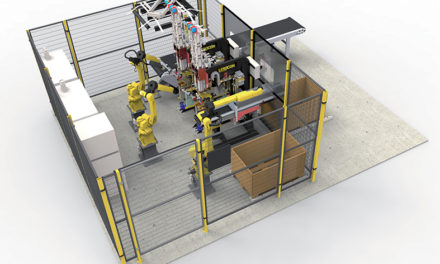
Chinese winemaker optimizes production with Siemens before a single grape is harvested
 Yantai/Shandong, China. The China Great Wall Wine Co., Ltd. is one of the biggest wine producers in Shandong Province, China’s best-known grape growing region on the country’s east coast. While the grapes are still ripening on the vine, and across all the wine processing stages, the company relies on digital solutions from Siemens. Using modern Product Lifecycle Management (PLM), the company is able to improve more than just quality and
Yantai/Shandong, China. The China Great Wall Wine Co., Ltd. is one of the biggest wine producers in Shandong Province, China’s best-known grape growing region on the country’s east coast. While the grapes are still ripening on the vine, and across all the wine processing stages, the company relies on digital solutions from Siemens. Using modern Product Lifecycle Management (PLM), the company is able to improve more than just quality and
quality control: consistent data acquisition and evaluation also ensure operational efficiency, while the standardization of processes across every production stage helps prevent errors.
Wine was being cultivated in China as long as 4,600 years ago. Today, the country produces around 13 million
hectoliters of mainly red wine every year, which it exports around the world. China Great Wall Wine Co., Ltd. uses largely traditional manual methods to harvest the grapes from its approximately 1,270-hectare wine-growing estate. But before and after the grape harvest, the winemaker uses modern technologies to ensure a continuous improvement in the quality of its wines, with the focus on the Simatic IT Manufacturing Execution System (MES) and specially developed apps (application software). Both these technical components are from Siemens.
A close eye on the vineyard
 The quality of a wine is heavily dependent on the quality of the grapes, which in turn is highly reliant on factors
The quality of a wine is heavily dependent on the quality of the grapes, which in turn is highly reliant on factors
such as rainfall, temperature and soil properties. This data is collected by meteorological stations. In addition,
an app developed specifically by Siemens measures the pesticide content of the soil. All of this information
is collated and analyzed in the Simatic IT MES, and made available in real time. This gives the winemaker
an accurate picture of both visible and hidden processes across the vineyard at all times. “The data allows
us to make informed decisions about how to tend our vines in response to weather changes and insect
problems. We can get better grapes based on collected data instead of relying solely on experience,” explains Liu Jianbo, Head of the IT Department at China Great Wall Wine Co., Ltd.
Automation to improve quality and efficiency
Following the grape harvest, the MES system kicks in to minimize the error rate across the entire winemaking
process by ensuring adherence to standards. This starts with pressing and continues with mashing, fermentation
and aging, right on through to bottling the finished wine. The system monitors every work step along the way. It also issues employees with precise instructions – not in paper form but by scanning barcodes relating to the individual process steps. This allows the company to trace which employee and equipment was involved with which process step and at what time. All the important work-related information is available at all times over the
local network. “The quality of the wine is paramount for the winery. As more automation hardware and sensors
are installed, efficiency and quality will continue to improve. And the MES system is able to link the control level even more closely and efficiently to the operations management level,” explains Ding Jianquiang, Project Manager with Siemens.
The future within grasping distance
The next step for China Great Wall Wine Co., Ltd. is working with Siemens on the development of an app
to involve customers more closely with the production process. China Great Wall Wine Co., Ltd. hopes this
new app will enable it to supply even more individual wines in future – by tailoring its production to customer
preferences.






